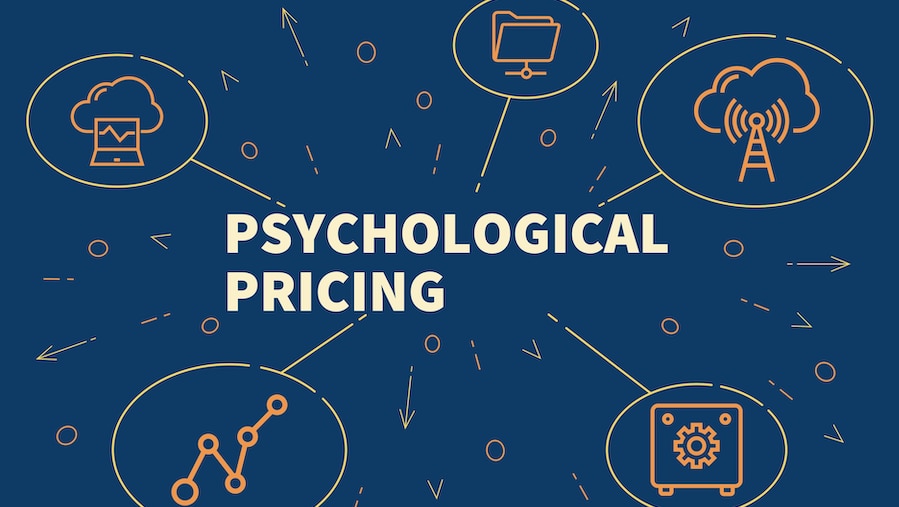Closing the sale. Even the term sounds manipulative. As you know, no one wants to be sold.
New clients care about the client relationship. Traditional closing techniques, however, focus on getting a new client rather than serving a new client. Do you really want them to feel like engaging your services is simply a business transaction?
Accounting professionals are client-centered. So, let’s consider how people make the decision to invest in your services. Then, it’s possible to structure an engagement process which emphasizes value.
Value-based pricing includes several psychological price strategies. When applied correctly, they increase the odds of a new client investing in your services. As you review these, consider how they apply to your firm.
Reduce your options
Even a preliminary conversation about financials may overwhelm a potential client. It’s why people tolerate messy books for awhile before reaching out to you.
Keep things simple to reduce information overload. That’s because too many details all at once causes our brains to feel paralyzed. People rarely make good decisions under pressure.
Although clients claim they want a wide variety of options, research proves that’s not true. Our brains don’t like complexity. Remember: more is not always better.
The decision to hire you stirs up internal tension. As a result, your potential clients will rely on various decision-making shortcuts. As a trusted advisor, you want to help potential clients make a decision that’s in their best interest.
The compromise effect
There’s a concept called the compromise effect. If you offer three options, the middle item gets picked most frequently. The left or right options feel riskier than the center option.
Many accounting professionals now offer 3 package options, bundling various services together. There’s an added benefit to offering packages. They separate your fees from time.
If packaging your services appeals to you, then here’s how to get started.
- List all the services you offer.
- Identify the essential ones.
- Next, highlight the most popular ones.
- Consider the outcome you deliver.
- Bundle together the services which support that outcome.
- Finally, place your most popular package as the middle choice.
The price spread
You now have insight about how people make decisions. Now let’s dive into psychological pricing.
Attraction effect
Consider the attraction effect as you price your packages. As mentioned earlier, most people choose the center option. Strategically you want to price the middle package closer to the larger package.
Next time you go to Starbucks, study their menu. They’ve mastered this price strategy. The majority of customers either select the middle or large option.
Let’s say the Latte at Starbucks is priced as follows:
Tall 3.00
Grande 3.66
Venti 3.95
Here’s the dilemma coffee lovers face. Either they limit the amount of coffee they get or they shell out more money for the size they want. Starbucks realizes loyal customers will happily spend more than reduce the amount of coffee in their cup.
Visual information
Decision making isn’t as logical as we’d like to believe. Visual information plays an important role in psychological pricing. Your subconscious influences the final outcome.
Consider the dollar sign. We associate this symbol with loss, not gain. Because of that, Starbucks keeps the dollar sign off the menu. Although it may seem insignificant, customers spend more when the dollar sign isn’t present.
Anchoring effect
This one’s juicy. It’s why I recommend accounting professionals remove all pricing from their website, including the “starting at” rates. Our brains naturally seek shortcuts.
Basically, we make decisions by comparing the current option to something else. So, everything gets compared to the first number mentioned. As a result, that number now becomes a frame of reference, or anchor, when deciding if your prices are too high, too low or just right.
Now let’s apply this to your packages. Identify the specific package you want a client to opt into. Go ahead and place that one next to your highest priced service. This simple placement strategy increases its perceived value.
Lead with high value
Anyone can comb the internet for all sorts of accounting information. Sharing content, whether on your website or social media, allows a potential client to experience what you offer before they contact you.
Consider all the tasting samples at Costco. How frequently do you impulsively purchase an item after tasting the sample? Sampling would quickly be discontinued if their stores lost money giving away free tastes.
Freely share your best information. By doing this, potential clients get a sense of who you are and your style. Leading with great information positively sways the decision to work with you.
Artfully weave in any innovative features that your service offers. As you educate them about what it’s like to work with you, vividly paint the picture about the benefits they’ll receive.
Reinforce those outcomes with success stories and case studies. Sprinkle in testimonials and reviews on your page to raise your credibility.
Here’s where it’s okay to brag. Share any recommendations or awards you’ve received. And, post about the various interviews, podcasts or publications which feature you. These noteworthy items belong on your website.
Psychological pricing insights
Buying is an emotional decision which is justified with logic. Since your work involves money, trust has to be established. Potential new clients need to believe you’ll follow through with your promise prior to signing a proposal.
Psychological pricing eases the decision for new clients. Packages simplify the choice. Rather than wonder if they want to work with you, they now decide how to work with you. Accounting professionals who apply this price strategy typically earn double, or ever triple, for their services.
For more free educational resources for accounting professionals from this author, visit BusinessSuccessSolution.com.
Editor’s note: This article was originally published Sept. 9, 2019, and updated with new content on March 14, 2022.
